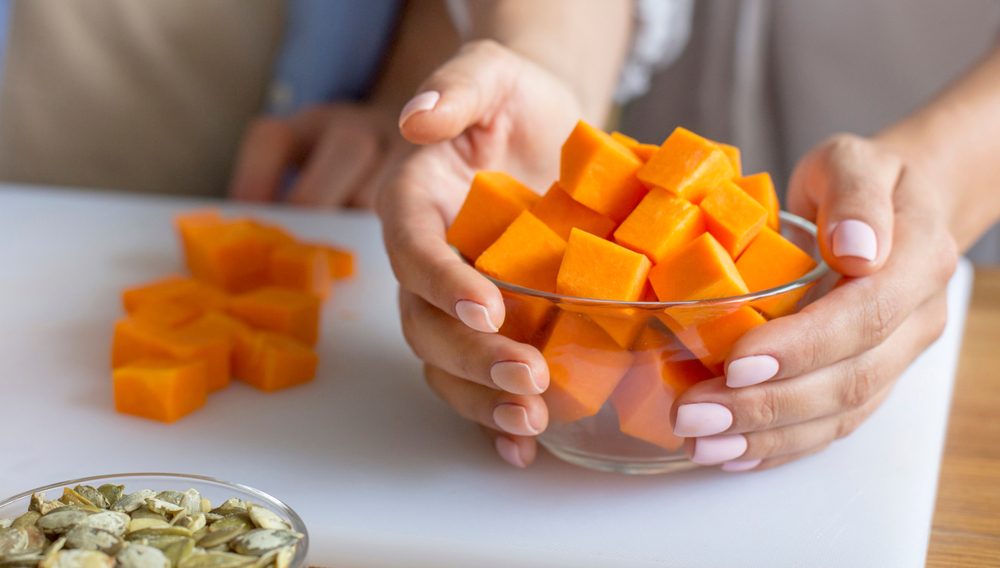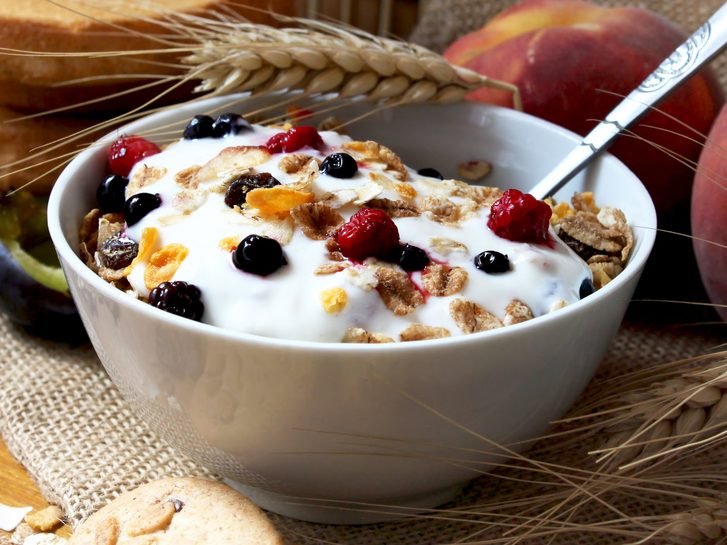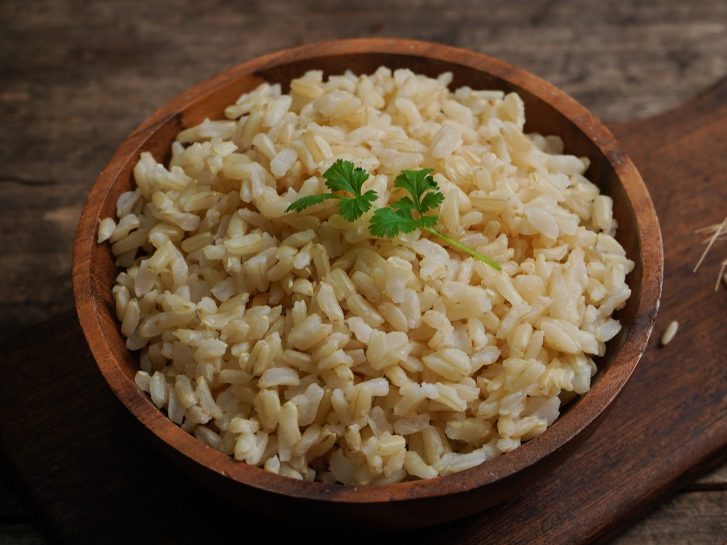
These Common Mistakes Are Making You Bloat, Here’s What to Do About It

Sometimes, you find yourself wearing the perfect skintight dress but the only problem is your bulging stomach, so you go back to wearing a loose shirt to hide the unflattering bump.
This is such a downer especially if you want to go out and stun in something fabulous — that lumpy belly is always popping out. However, did you ever wonder if it is really belly fat or are you just bloated? After all, this is a common issue among women, especially those over 40.
Life starts at 40 they say, but this is the age when you start gaining more weight and having a hard time losing it due to slower metabolism. This is also one of the factors responsible for giving you a bloated belly. But, fret no more because, with some changes in your diet and lifestyle, you can reverse your bloating and have a flat tummy see light once again. Here are some ways you can avoid bloating:
Have a Fiber-Rich Breakfast

catalina.m/Shutterstock
Eating a high-fiber breakfast in the morning aids faster metabolism
One way to get your digestive system going in the morning is to have a fiber-rich breakfast. When the system becomes active, your metabolism will also kick-start. To make this more effective, try eating food with two kinds of fiber, like oatmeal and certain cereals.
Studies have found that people who ate cereals with two kinds of fiber have more regular bowel movements. Dr. Joanne Slavin expounded that these types – the bulky insoluble fiber and gel-like soluble fiber — team up to direct water toward your colon, making the food you eat go down quicker.
Trade Refined Carbs for Whole Grains
Let’s admit it: we all love carbs. If you don’t then you are lucky bread, pasta, and pastry don’t entice you. Despite how much we love pizza and Aglio e olio from your favorite Italian restaurant, we need to resist gobbling them up simply because they aid in bloating — refined carbs are reduced to glucose fast, according to Dr. Amy Shapiro.
She added that glucose is used as an energy source but those you don’t use right away get stored in your muscles and liver. The catch is, when we store glucose, we also store two molecules of water, causing water retention that leads to a bloated stomach.

vm2002/Shutterstock
Switching to quinoa from white rice helps in reducing water retention in the body
Instead, to satisfy your craving, try having whole grains, quinoa or sweet potatoes. These are still carbs but are complex, meaning the body will take a longer time to transform these into glucose, which won’t lead to water retention.
Watch Your Sodium Intake
Food high in sodium is another kind of food that keeps water in the body. Sodium, which binds with water, helps in maintaining the fluids inside and outside the cells. However, most people consume more than the recommended 2,300 mg per day. In fact, according to the Centers for Disease Control and Prevention, the majority of the population has an average of more than 3,400 mg daily.

JOKE_PHATRAPONG/Shutterstock
This occurs because although we need sodium in our diet, we don’t usually manage how we consume it. We don’t just need to avoiding high-sodium food, we also need to be mindful when buying processed food and eating in restaurants.
Also, this nutrient cannot just be found in savory or salty food but is also incorporated in bread, cereals, and pastries. The CDC reported that certain cereals have an average of 150 to 300 mg of sodium while a slice of bread has 80 to 230 mg.
More in Health & Well-being
-
`
Here’s Everything You Need to Know About Open Relationships
An open relationship is a consensual arrangement where partners agree to engage in romantic or sexual relationships with other people. Unlike...
June 6, 2024 -
`
Explore the Multifaceted Goals of Meditation
What is the goal of meditation? If you have ever found yourself asking this question, you are not alone. Meditation has...
May 31, 2024 -
`
When is National I Love You Day Celebrated? Mark Your Calendar
Life can get hectic, and sometimes amidst the daily grind, we forget to express our love and appreciation for the phenomenal...
May 23, 2024 -
`
When’s the Best Time of Day to Fish?
For any angler, a successful fishing trip hinges on several factors. But one of the most crucial elements is timing. Knowing...
May 14, 2024 -
`
What Mental Illness Does Britney Spears Have? Discovering the Answer
Britney Spears, a name that resonates with millions around the globe, goes far beyond the glitz and glamour of her stardom....
May 7, 2024 -
`
Here Are Some Easy Ways To Say No To Unrealistic Expectations In Your Relationship
If you are in a relationship, you should constantly work on improving it. Some early lovebirds fall in love too quickly...
May 3, 2024 -
`
Therapy? Medication? What Are the Treatments for PTSD
Post-Traumatic Stress Disorder (PTSD) is a common after-effect of traumatic events. It can be a debilitating condition, but the good news...
April 25, 2024 -
`
Courting vs Dating – Which Relationship Path is Right for You?
In today’s fast-paced world, the terms ‘courting’ and ‘dating’ often swirl around in conversations about relationships. While some people may use...
April 23, 2024 -
`
Essential Mexico Travel Tips for a Seamless Adventure
Mexico, a land of vibrant culture, breathtaking landscapes, and mouthwatering cuisine, beckons travelers from across the globe. But before you embark...
April 16, 2024















You must be logged in to post a comment Login